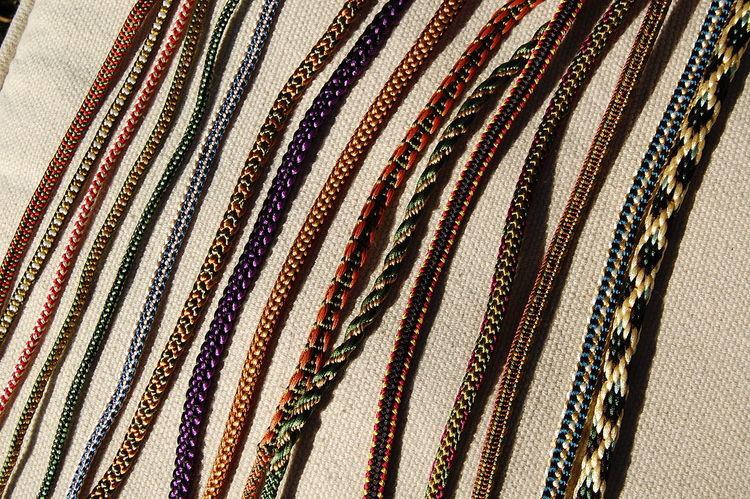 | ||
A marudai (丸台, marudai) is a frame used for making kumihimo, a type of Japanese braid. The Japanese style marudai is 16" (40cm) high and is usually used while kneeling or when placed on a table. The Western style 26" marudai allows the braider to sit in a chair to braid. They are most commonly made out of wood, although sometimes plastic is the chosen material. Unlike kumihimo disks, marudais have no indication of where the thread should be placed; it is done freehand. To create the tension required for the rope to form, wooden bobbins called tama are rolled on the strands of threads, and a bag of counterweights is placed at the base knot of these threads, where the rope begins. The tama are often filled with lead or other heavy metals.
Contents
Terms related to marudai
Books
References
Marudai Wikipedia(Text) CC BY-SA
